Archive for August 2014
Kinnucan donated $1,000 to “Friends of Lake Forest Rec Department” for scholarship to Lake Forest’s Sailing Program
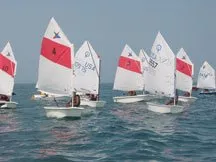
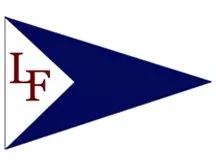
Lake Forest Sailing is one of the best sailing programs in the country and a phenomenal city resource. They were awarded the Best Community Sailing Program of the Year from the Illinois Parks and Recreations Association. Scholarship dollars provide local deserving kids the chance to learn to sail.
Firewood & the Fight against EAB – The Do’s and Don’ts of Preserving Illinois Landscape
Before you begin to gather and transport firewood in Illinois for that beautiful campfire you are preparing for, there are a few things you need to know. Due to the infestation of Emerald Ash Borer, or EAB, in the State of Illinois, there are state and federal government regulations that must be adhered to when you purchase, cut down, or even gather what appears to be “just dead” wood. More importantly, you need to be aware of the devastating affect a simple plan of a campfire can have on the Illinois Landscape when you transport just one small piece of infested wood to a different location.
The entire State of Illinois has been federally regulated by placing all ash products under quarantine. This includes ash nursery stock, green lumber, logs, stumps, roots, branches and non-composited wood chips. Because distinguishing the hardwood firewood type is nearly impossible by sight – all hardwood firewood (oak, maple, hickory, and ash) are regulated under the quarantine.
What this means for firewood distributors and producers is they are not allowed to move any hardwood firewood out of the State of Illinois. (There are very stringent regulations and precautions that must be followed and inspection made before migration out of State will even be considered permissible.)
Now, here is where the tricky part of the quarantine comes in, more so for those of us who just want to build a simple fire to relax around on a cool summer night. The USDA allows firewood that originated in Illinois to move freely within Illinois State lines. However, The Illinois Department of Agriculture has an interior quarantine in place that states firewood that originated in the interior quarantine (a known infested area) must not leave the interior quarantine. In other words, the IDA urges (and enforces) confirmed infested areas to burn ash firewood at origin site and transporting firewood off site should be kept to an almost non-existent minimal. Keep in mind, there are those stringent regulations by the IDA for migrating, that also apply within the interior boundaries, mentioned above. The ultimate goal is to keep all firewood local. Simply stated, firewood that is produced, distributed, sold, bought, gathered, etc. locally should be burned locally. No matter where you camp in the State of Illinois, you will be asked to burn all of your firewood before leaving, and you will not be permitted to transport left over wood home with you. “No log shall be left unburned.”
Educating the citizens of Illinois of the risks associated with movement of firewood and other products is an ultimate goal that needs to be met, especially in these critical times where more and more ash trees are dying and becoming readily available as firewood. So think before you pick up that dead branch, or buy your next bushel of firewood and start traveling with it. Help preserve the Illinois Landscape by knowing the boundaries of the quarantines, and better yet, know you could be hauling a lot more than just wood.
If you have any questions, please contact one of our tree experts who specialize in the fight against Emerald Ash Borer and the preservation of our landscape. Let us inspect before you infest!
Your Dream Landscape Design Is Just A Call Away
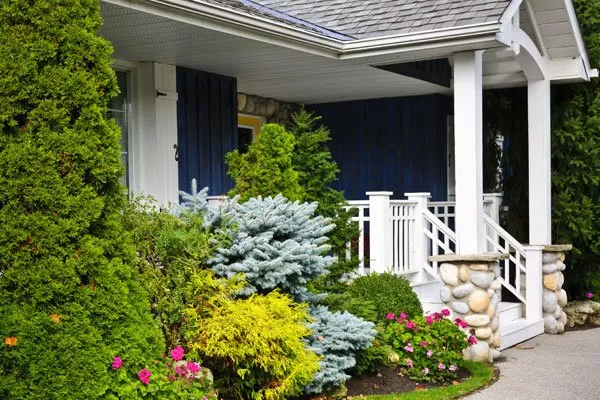
Do you fantasize of a beautiful yard “as seen on TV” or in a magazine? Not knowing what will grow where, what to fertilize, prune, cut, and when can be very expensive mistakes that are easily made when we leap into our picture perfect vision. Calling in the experts will not only save you money in the long run, you will also be spared the disappointment and frustration of watching your hard work and dream wither away.
Kinnucan Tree Experts and Landscape Company specializes in making your landscape dreams come true; from landscape design and construction, maintenance, plant health, lawn care to fertilization. You bring your vision to us, and we will work closely with you to keep your vision in bloom for years to come. Our certified expert team offers over 40 years’ experience in making landscape dreams a reality while saving our customers’ time and money. Call Kinnucan today: 847-234-5327. Your dream landscape is ready to bloom.
Kinnucan lends out one of our trucks to local Rotary Club for parade

We were happy to let the Lake Forest/Lake Bluff Rotary Club use our loader for the Lake Forest Days Parade. We even decorated it for them!
Fortifying Our Forest
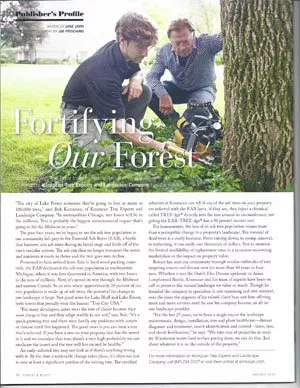 “The city of Lake Forest estimates they’re going to lose as many as 100,000 trees,” says Bob Kinnucan, of Kinnucan Tree Experts and Landscape Company. “In metropolitan Chicago, tree losses will be in the millions. This is probably the biggest environmental impact that’s going to hit the Midwest in years.”
“The city of Lake Forest estimates they’re going to lose as many as 100,000 trees,” says Bob Kinnucan, of Kinnucan Tree Experts and Landscape Company. “In metropolitan Chicago, tree losses will be in the millions. This is probably the biggest environmental impact that’s going to hit the Midwest in years.”
The past four years, we’ve begun to see the ash tree population in our community fall prey to the Emerald Ash Borer (EAB), a beetle that burrows into ash trees during its larval stage and feeds off of the tree’s vascular system. The ash can then no longer transport the water and nutrients it needs to thrive and the tree goes into decline.
Presumed to have arrived from Asia in hard wood packing materials, the EAB decimated the ash tree population in southeastern Michigan, where it was first discovered in America, with tree losses in the tens of millions. Now, it’s spread its way through the Midwest and eastern Canada. In an area where approximately 20 percent of our tree population is made up of ash trees, the potential for change to our landscape is large. Not good news for Lake Bluff and Lake Forest, both towns that proudly wear the banner “Tree City USA.”
“For many developers, ashes where the tree of choice because they were cheap to buy and they adapt readily to our soil” says Bob. “It’s a quick growing tree and there were hardly any problems with insects or disease until this happened. The good news is you can treat a tree that’s infected. If you have a tree on your property that has the insect in it and we inoculate that tree, there’s a very high probability we can eradicate the insect and the tree will live on and be healthy.”
An early-infected tree may not look as if there ‘s anything wrong with it. By the time a noticeable change takes place, it’s often too late to save at least a significant portion of the exiting tree. The certified arborists at Kinnucan can tell if nay of the ash trees on your property are infected with the EAB larva. If they are, they inject a chemical called TREE-age directly into the gree around its circumference, targeting the EAB. Tree-age has a 90 percent success rate.
For homeowners, the loss of an ash tree population means more than a perceptible change to a property’s landscape. The removal of dead trees is a costly business. From cutting down, to stump removal, to replanting, it can easily cost thousands of dollars. Not to mention the limited availability of replacement trees in a recession-recovering marketplace or the impact on property value.
Robert has seen our community through similar outbreaks of tree targeting insects and disease over his more than 40 years in business. Whether it was the Dutch Elm Disease epidemic or Asian Longhorned Beetle, Kinnucan and his team of experts have been on call to preserve the natural landscape we value so much. Through he founded the company to specialize in tree trimming and tree removal, over the years the requests of his valued client base saw him offering more and more services until he saw his company become an all-in-one landscape provider.
“For the last 25 years, we’ve been a single source for landscape maintenance, design, installation, tree and plant healthcare – disease diagnosis and treatment, insect identification and control – lawn, tree, and shrub fertilization,” he says. “We take care of properties in totality. If someone wants hard surface paving done, we can do that. Just about whatever it is on the outside of the property.
For more information on Kinnucan Tree Experts and Landscape Company call 847-234-5327 or visit them online at kinnucan.com.
Weather the Storm with Kinnucan Tree Expert and Landscape Company
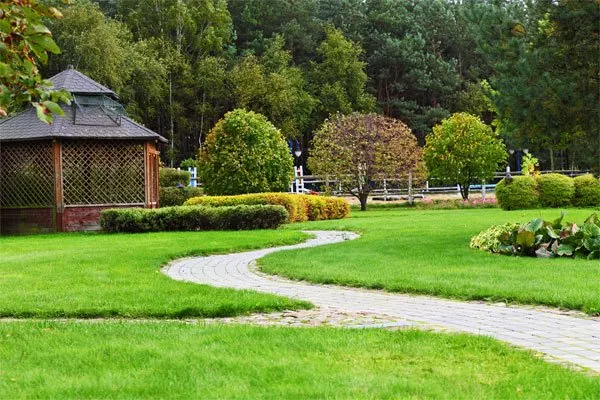
‘Tis the season of unpredictable weather. The ever changing weather often comes with little or no warning. Severe storms, high winds, flooding, tornadoes and the occasional freak hail storm can destroy property and even cause loss of human life. To complicate matters more, the aftermath can be even more dangerous if not handled with precaution and expertise.
Being proactive and planning for emergencies is vital for safety and survival. Kinnucan Tree Experts and Landscape Company can guide you on how to weather the storm safely and we are available to pick up the pieces after the storm, regardless of day or time. Our expert emergency team is available 24/7. We are proud to announce we have been voted “The Best of the Best” in Lake Bluff and Lake Forest after the devastating storm that took us by surprise in June.
Fallen trees can cause all sorts of chaos. Blocking roadways, knocking out power lines, severe property damage to homes, commercial buildings, automobiles, you name it. No fixed, or even moving, object is safe when a tree is coming down with force. It is important to have an expert remove a fallen tree to avoid the untrained unforeseen dangers that could result and cause even more damage; or even severe injuries and possible death.
Tips on how to Weather the Storm Safely:
Having a safe plan to protect your family in the event of dangerous weather and emergency situations is extremely important.
- Have a disaster supply kit readily available.
- Have a plan:
- Designate and know where your “safe place” is.
- A meeting spot if you were to be separated.
- Know who your out of town contact is and how to contact them.
- Know where your disaster supply kit is located.
- Take pictures or videos of your home, its contents for insurance purposes. Keep at a friend’s home.
- Know where your gas and water shut-off valves are located.
- Have cash on hand. (power outages means no ATM or Credit Cards)
- Fill your car up
- Include pets in your plan. (This includes making sure their vaccinations are up-to-date).
- Listen to emergency announcements and follow directions. THIS IS KEY!!!
Tips for After the Storm:
- Contact your out-of-town person and other family members to let them know you are okay.
- Continue to listen to emergency announcements:
- Wait for the “all clear” before returning home or leaving your “safe room”.
- Access damages in your home.
- Contact your insurance provider to report damages.
- Clean spilled chemicals – medicines, bleaches, gasoline and any other flammable liquids.
- Again, include your pets: Confine them during clean-up; use a leash when re-orienting them to the new environment of the home. If you cannot locate your pet after the disaster – contact your local animal control office immediately.
- Be neighborly; make sure your neighbors are okay – especially the elderly and disabled.
- Repair and block access to anything in your home that is damaged and can be dangerous.
- Stay away from downed power lines.
- CONTACT AN EXPERT to remove trees and large debris.
Following a few simple steps and preparing for the worst is the safest measure. As the old saying goes, “it is better to be safe than sorry”. We are here to help you prepare for the worse and will get you back to the best safely. Call our expert team if you have any questions.
